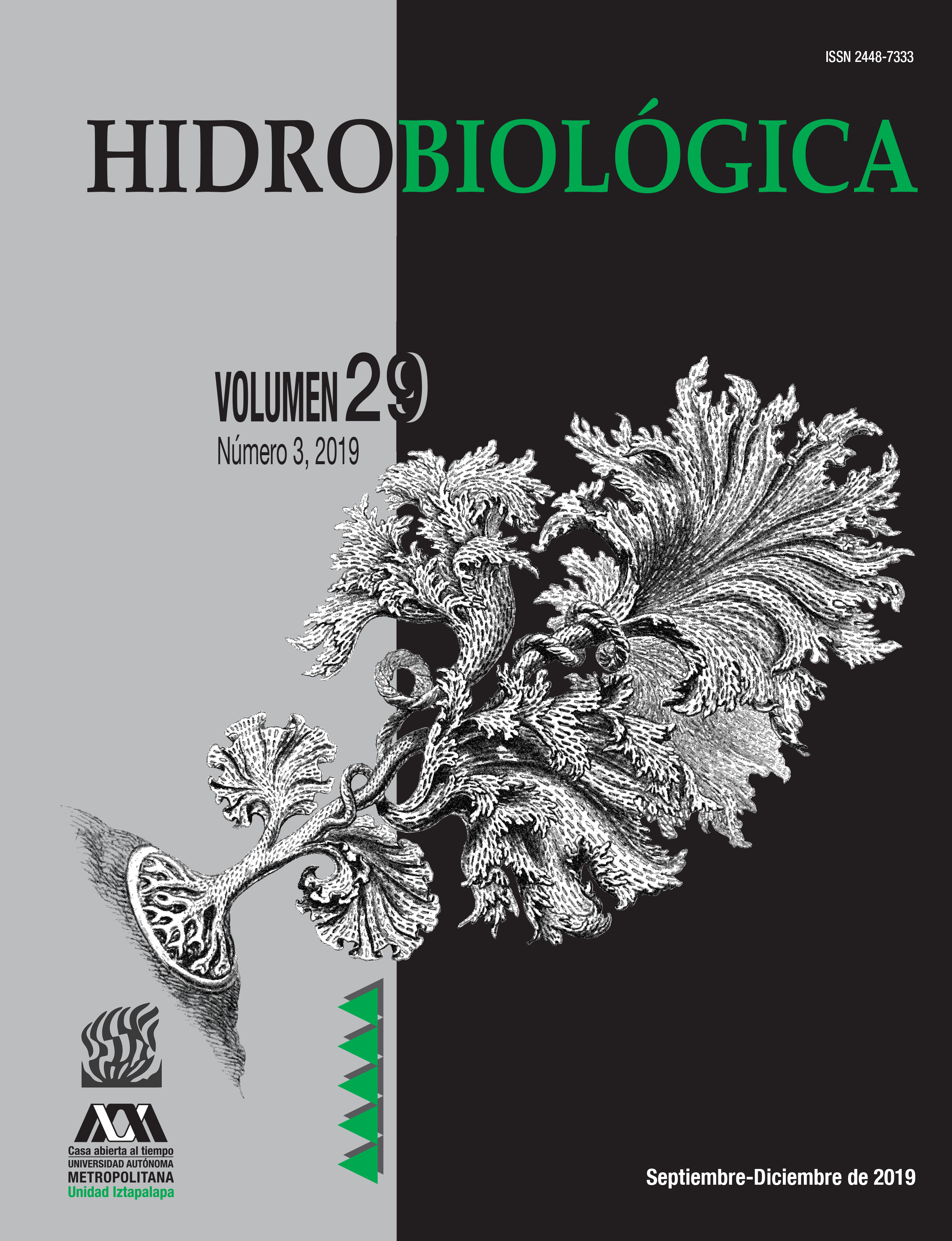Macroalgal taxocoenosis as indicators of water quality in coastal systems
DOI:
https://doi.org/10.24275/uam/izt/dcbs/hidro/2020v29n3/ArdillaKeywords:
bioindicators, pollution, sensible, species distribution, tolerantAbstract
Background: Macroalgae communities predominate in coastal areas, especially on rocky shores. The species composition of such communities may be characteristic of a quality status of water inasmuch each species either adapt or not to the physicochemical variables (temperature, pH, salinity and dissolved oxygen). Therefore, differences in species composition would be expected from different concentrations of diluted compounds in water. Goals: To determine the macroalgae’s tolerance intervals to physicochemical conditions, and to classify them as tolerant if they survive within wide intervals, or as sensitive, poorly tolerant species that are distributed under restricted water conditions. Methods: A database was built of georeferenced records of other localities on the planet where species present on the coast of Baja California Sur are also found, was obtained from the Global Biodiversity Information Facility (GBIF). Besides, the 2005 to 2012 average values for physicochemical variables and the concentration of nutrients in the water (nitrate, phosphate, silicate and dissolved organic matter) were gathered from other places where each specie has been recorded through satellite images obtained by remote sensors of the National Oceanic and Atmospheric Administration (NOAA). Results: A heatmap was generated showing an apparent distinction in the floristic composition (taxocoenosis), facing possible change scenarios which proposes to include the species that survive within wide physicochemical and/or nutrient variations as part of the reference for protocols on the distribution of mineral content. While species with narrow intervals of occurrence in the measured variables should be considered as taxa that indicate the intervals at which they occur. Conclusions. Possible taxocoenosis that can occur in BCS under different water quality conditions are here proposed. These depend mainly on the concentration of nutrients (silicate and organic matter) and physicochemical (dissolved oxygen and pH) as being those variables with a greater influence on the species association for a given quality status.
Downloads
Downloads
Published
How to Cite
Issue
Section
License
Los autores/as que publiquen en esta revista aceptan las siguientes condiciones:
De acuerdo con la legislación de derechos de autor, HIDROBIOLÓGICA reconoce y respeta el derecho moral de los autores, así como la titularidad del derecho patrimonial, el cual será cedido a la revista para su difusión en acceso abierto.
Publicar en la revista HIDROBIOLÓGICA tiene un costo de recuperación de $500 pesos mexicanos por página en blanco y negro (aproximadamente 29 dólares americanos) y $1000 pesos por página a color (aproximadamente 58 dólares americanos).
Todos los textos publicados por HIDROBIOLÓGICA sin excepción se distribuyen amparados bajo la licencia Creative Commons 4.0Atribución-No Comercial (CC BY-NC 4.0 Internacional), que permite a terceros utilizar lo publicado siempre que mencionen la autoría del trabajo y a la primera publicación en esta revista.
Los autores/as pueden realizar otros acuerdos contractuales independientes y adicionales para la distribución no exclusiva de la versión del artículo publicado en HIDROBIOLÓGICA (por ejemplo incluirlo en un repositorio institucional o publicarlo en un libro) siempre que indiquen claramente que el trabajo se publicó por primera vez en HIDROBIOLÓGICA.
Para todo lo anterior, el o los autor(es) deben remitir el formato de Carta-Cesión de la Propiedad de los Derechos de la primera publicación debidamente requisitado y firmado por el autor(es). Este formato se puede enviar por correo electrónico en archivo pdf al correo: enlacerebvistahidrobiológica@gmail.com; rehb@xanum.uam.mx (Carta-Cesión de Propiedad de Derechos de Autor).
Esta obra está bajo una licencia de Creative Commons Reconocimiento-No Comercial 4.0 Internacional.


